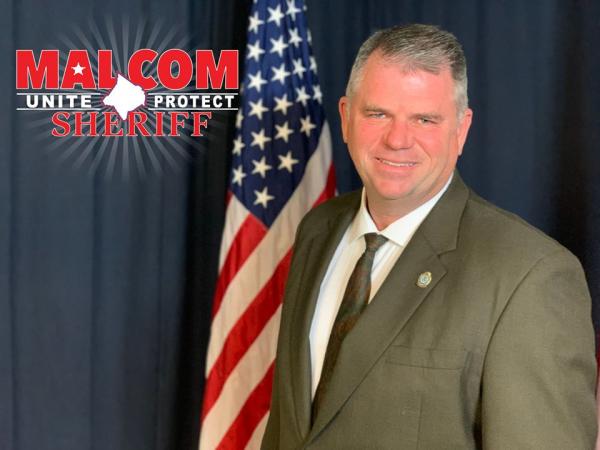
—
Human Trafficking is a real problem. It can affect large and small communities around America at any given time. That being said, sometimes a rather harmless situation can be misinterpreted as nefarious harm and the results can spread like wildfire on social media.
One such “real-life” story, was describe by Ken Malcom, a veteran law enforcement officer and Human Trafficking Specialist from Georgia. Malcom mentioned that recently, for a few days in his small town of Covington, Georgia, social media was on fire with the presumption to be on the alert for a man trying to kidnap kids in a popular shopping center. In this case, a friend of a friend recounted someone’s experience in a parking lot of a shopping center, where a parent and child ran into a strange person and engaged in a brief, unwanted interaction that left the parent terrified. The evolving post mention how close the parent came to seeing the child kidnapped in plain sight, and how vigilant we all must be to protect our families. Perhaps similar social media posts have been made within your neighborhood.
Malcom’s story showed how a post on social media went viral after a “suspicious” person in his community was seen in a public place causing a near-panic. What was this “evil” person doing, you ask? He was innocently passing out flyers that advertised some of the ministries in his local church. That was it. But a passersby became frantic and shared breathless online warnings about “human trafficking.”
Malcom went on to say that human trafficking is a real problem across the country and around the world, with law enforcement at all levels working to address it. Malcom states that “the metro Atlanta area is considered a hub for this activity, as it is for many other forms of illegal conduct. But too many people who talk about human trafficking on social media do not truly understand what it is. Until it is understood, it cannot be dealt with properly.”
Back to the encounter in the parking lot. Contrary to the images we have seen often in movies and television shows, the chances of a child being snatched at random from a parking lot, put in a van and sped away are extremely rare. That’s just not how it works. People are far more likely to be a victim of a non-violent crime like theft then being kidnapped while in public. Sometimes being approached by a stranger will give you the “creeps”, but it doesn’t mean that person intends to harm anyone.
Malcom goes on to state that “one of the most common ways a predator lures a victim into human trafficking is by meeting a basic need.” Malcom, himself an expert in the field of Human Trafficking, says that usually “the victim is often provided food, clothing, protection, drugs, sustenance or other needs in return for servitude. Many times the victim enters the relationship willingly based on promises made by the perpetrator and is unable to leave.”
Virtually all law enforcement experts agree that the most common form of entry into human trafficking is the voluntary entry by the victim, and many times the victim and perpetrator start out in a boyfriend-girlfriend type of relationship that turns sinister. Malcom stated that in some cases, “a bond is developed to the point that the victim actually loves and will protect the perpetrator at all costs.”
Another common form of human trafficking involves the importation of victims into the country. These victims are brought here with promises of citizenship but, upon arrival, are subjected to involuntary sexual or labor servitude (human trafficking is not always sexual but also involves forced labor). Many times these victims are promised freedom after an undetermined amount of time (working off their dues for their trip). Unfortunately, they are never granted freedom, but rather are transported frequently to various locations and cities across the United States. Malcom explained that “these victims are reluctant to escape their situations due to various reasons that include fear of reprisal from their captors, fear of prosecution by law enforcement, deportation, or having nowhere to go after leaving.”
These two scenarios are by far the most likely ways for people to be ensnared in the world of human trafficking. Everyone should not be in fear of going out in public with their children, but there is always the potential for danger. When asked what should the average person do to be careful without being unduly paranoid or causing unnecessary panic? Malcom states that the number one safeguard is to “be aware of your surroundings. The most likely place for a stranger to attempt to do you harm is between the time you get out of your car in the parking lot and the moment you walk into a place of business.”
Malcom says “When out in public, if someone actually does approach with malicious intent, have a plan in advance for how to will deal with it. Carry pepper spray and know beforehand how it works and how to use it. If involved in a physical altercation (which is extremely rare), know how to attack your opponent’s weaknesses and which parts of the body are the best places to strike. Malcom advises to check with local authorities for classes that teach how to defend yourself when in a precarious situation.
As is the case with any suspicious activity, it’s paramount that law enforcement is immediately notified. Try to give as many details as possible which could be helpful in an investigation, from physical descriptions of the assailants to whatever vehicles they may be driving.
If you or someone you know is a victim, call the Human Trafficking Hotline at 1-888-373-7888 or send a text to the hotline at 233733.
Read more about Ken Malcom and his three decades of experience in law enforcement in Georgia. Connect with Ken on Facebook .
Release ID: 88941520

